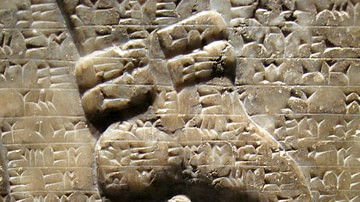Review

| Rating: | |
|---|---|
| Title: | Notework: Victorian Literature and Nonlinear Style (Stanford Text Technologies) |
| Author: | Simon Reader |
| Audience: | Professional |
| Difficulty: | Medium |
| Publisher: | Stanford University Press |
| Published: | 2021 |
| Pages: | 252 |
This book is recommended to academics and university students interested in different approaches to fiction writing and the evaluation of literary works published in the late Victorian period and early 20th-century literary criticism. Simon Reader provides a novel approach to the creative writing process and analyses the periphery of fiction.
Victorian literature often presents the two matching pieces of the same artefact – expressed and implied. Naturally, any work of literature written in this period carries traces of the obscure and intertwined. In Notework, Simon Reader draws attention to this fragmented aspect in his investigation of notes, diaries and writings of Charles Darwin, George Gissing, Roland Barthes, Gerard Manley Hopkins, Oscar Wilde, and Vernon Lee. Having been motivated by Darwin’s concept of useless organs, Reader endeavours to understand the impact of these useless fragments on the published works by scrutinizing the disorganised aspect of writing and aims to reach beyond the limitations of form and genre in literature. This book is the most suitable for academics or university students interested in literary criticism or literary history.
Through problematising the literary approach of the New Criticism, Reader argues that close and minimalistic reading of any literary work perceives beauty only at the totality or within the bounds of the text, respectively, and disregards the value of the parts on their own. He illustrates how this approach would focus only on a narrow space of meaning. Instead of disregarding so-called useless texts, he employs them to peer through writers’ personal lives and writing processes. What Reader calls nonlinear style is the totality of personal expressions and textual interactions of these notes, diary entries and other affiliated fragments. However, not all fragments evolve into the parts of a whole or necessarily become related to the fictional product. In other words, they defy their own usefulness. Reader argues this moment as the point when we see fragmentary writing in its own elements. Ultimately, this book draws attention to the process of literary production and a deeper appreciation of a literary text.
In Part I, Reader analyses the nonlinear as a machinery of processing momentary ideas and aspirations. Darwin’s diary entries, for Reader, are instrumental in forming his ideas on evolution because they allow him to roam around natural forms and the environment without any specific aim or argument in need of evidence. This is also true for the novelist George Gissing, whose notes reveal a style of degree zero realism in writing that is free from the necessity of prescribed ends and motivations.
In Part II, the book investigates the nonlinear writing that accompanies the creation of literary work. For Hopkins, there exists an intangible relation between the animate and inanimate aspects of nature and through his notes and observations, the poet yearns to be a part of this vast collective being. Torn between his poetic aspirations and vocational commitments, Hopkins seems to have used the nonlinear style to achieve a congregation of fictional creators with the Christian god. In his study of Wilde’s notes, Reader sees a computer-like attitude for achieving a large flux of information and data.
Reader then steps into the domain of modernity and examines how nonlinear style can work outside the limitations of classical fiction writing. Part III uses the previous analysis of Darwin to examine Vernon Lee’s notes to show how Lee's nonlinear style is an expression of fluctuating aesthetic responses by relinquishing any pretence of genre and form in her career. True to the modernist statement on the possibility of presenting a coherent expression of life through subjective observations of the writer, Lee is in search of life scattered around through objects of triviality and recollection.
Reader, Associate Professor of English at College of Staten Island, the City University of New York, concludes his project in a Darwinian way by proposing the existence of fragmented writings of an author beyond and independently from the affiliated work of fiction. He also foresees the possibility of recovering the individual via contemporary documentation of social media interactions and the impressions recollected through that documentation.
About the Reviewer
Cite This Work
APA Style
Ateş, A. M. (2024, October 09). Notework: Victorian Literature and Nonlinear Style. World History Encyclopedia. Retrieved from https://www.worldhistory.org/review/475/notework-victorian-literature-and-nonlinear-style/
Chicago Style
Ateş, Ahmet M. "Notework: Victorian Literature and Nonlinear Style." World History Encyclopedia. Last modified October 09, 2024. https://www.worldhistory.org/review/475/notework-victorian-literature-and-nonlinear-style/.
MLA Style
Ateş, Ahmet M. "Notework: Victorian Literature and Nonlinear Style." World History Encyclopedia. World History Encyclopedia, 09 Oct 2024. Web. 03 Apr 2025.




